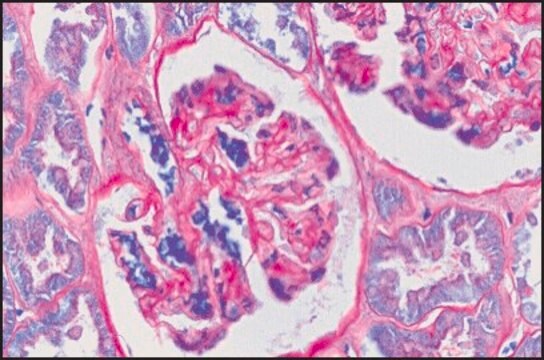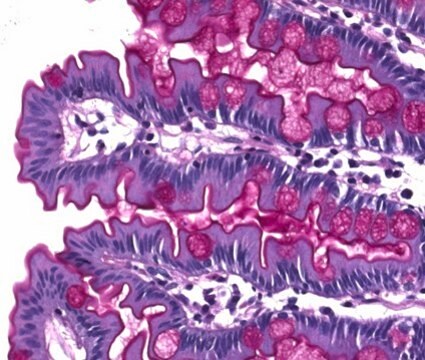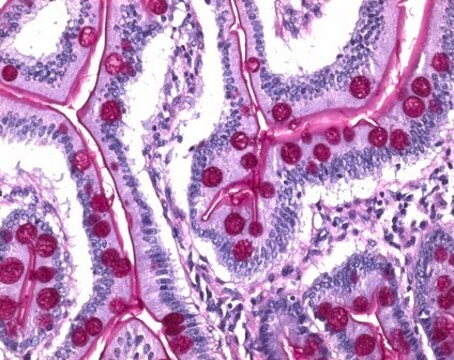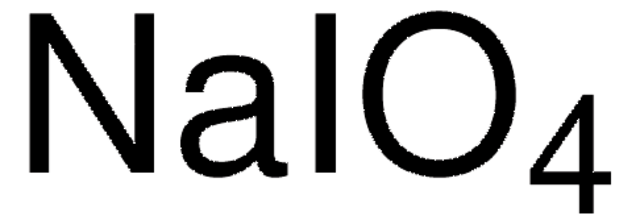Kluczowe dokumenty
About This Item
Polecane produkty
klasa czystości
reagent
linia produktu
ReagentPlus®
Próba
≥99.0%
Formularz
powder or crystals
przydatność reakcji
reagent type: oxidant
metody
toxicology assay: suitable
mp
122 °C (lit.)
rozpuszczalność
water: 100 mg/mL, clear, colorless
ciąg SMILES
OI(O)(O)(O)(O)=O
InChI
1S/H5IO6/c2-1(3,4,5,6)7/h(H5,2,3,4,5,6,7)
Klucz InChI
TWLXDPFBEPBAQB-UHFFFAOYSA-N
Szukasz podobnych produktów? Odwiedź Przewodnik dotyczący porównywania produktów
Opis ogólny
Zastosowanie
- Oxidation of alcohols to ketones and aldehydes.
- Oxidation hydroxylamine derivatives.
- Oxidation of arenes to quinones.
It can also be used:
- As a stoichiometric oxidant with chromium (IV) acetate for the oxidation of tertiary C−H bonds to tertiary alcohols.
- In combination with chromium oxide to oxidize primary alcohols to carboxylic acids; alkylbenzenes to benzoic acids; and cyclic benzyl ethers to the corresponding lactones.
- In the selective oxidation of sulfides to sulfoxides using FeCl3 as a catalyst.
Informacje prawne
Hasło ostrzegawcze
Danger
Zwroty wskazujące rodzaj zagrożenia
Zwroty wskazujące środki ostrożności
Klasyfikacja zagrożeń
Aquatic Acute 1 - Aquatic Chronic 1 - Eye Dam. 1 - Ox. Sol. 1 - Skin Corr. 1B - STOT RE 1 Oral
Organy docelowe
Thyroid
Kod klasy składowania
5.1A - Strongly oxidizing hazardous materials
Klasa zagrożenia wodnego (WGK)
WGK 3
Temperatura zapłonu (°F)
Not applicable
Temperatura zapłonu (°C)
Not applicable
Wybierz jedną z najnowszych wersji:
Masz już ten produkt?
Dokumenty związane z niedawno zakupionymi produktami zostały zamieszczone w Bibliotece dokumentów.
Klienci oglądali również te produkty
Nasz zespół naukowców ma doświadczenie we wszystkich obszarach badań, w tym w naukach przyrodniczych, materiałoznawstwie, syntezie chemicznej, chromatografii, analityce i wielu innych dziedzinach.
Skontaktuj się z zespołem ds. pomocy technicznej











